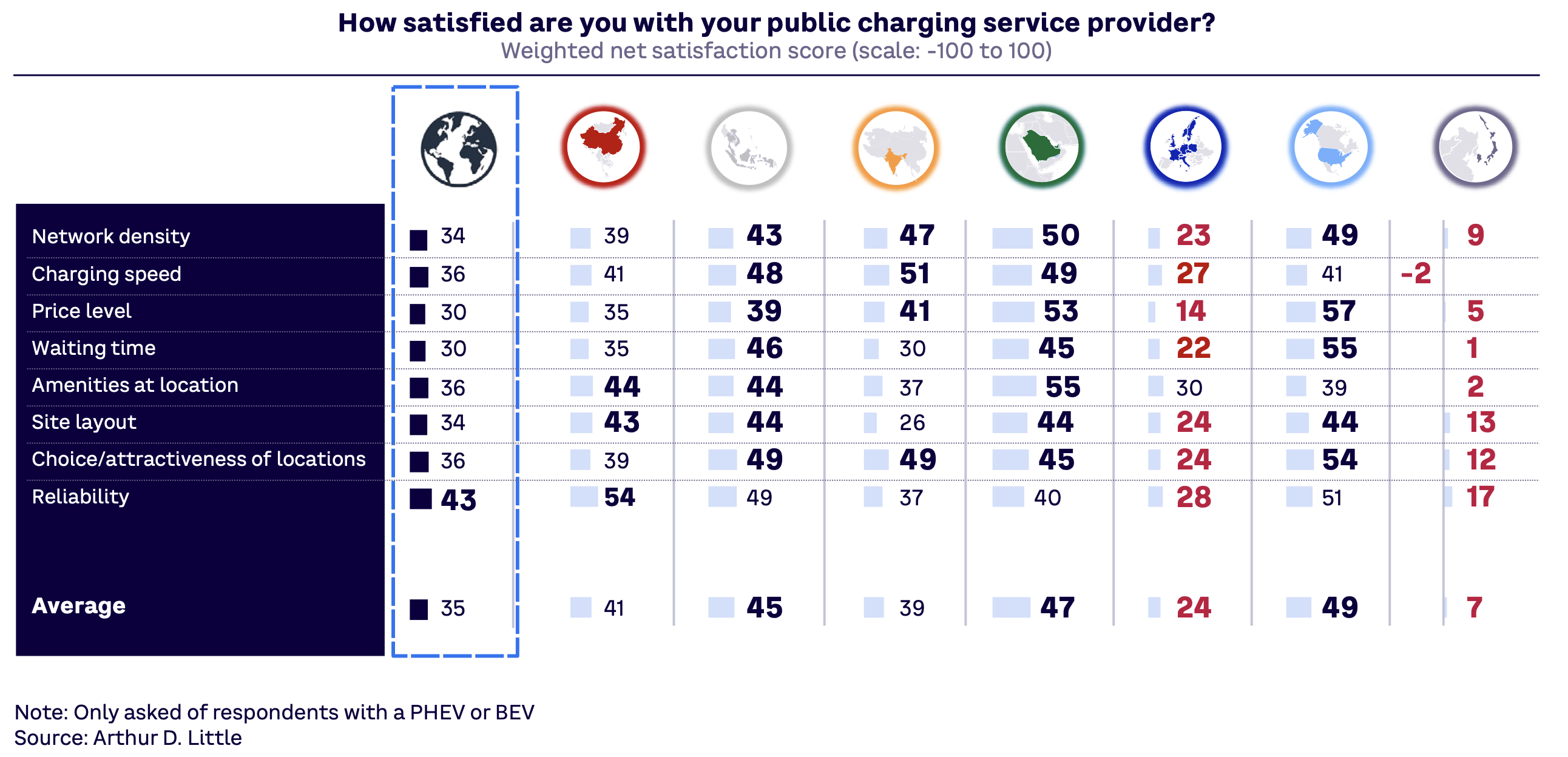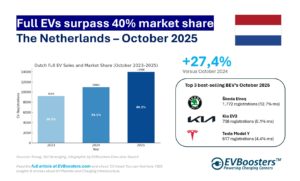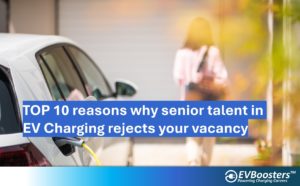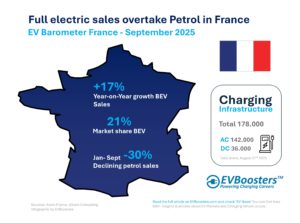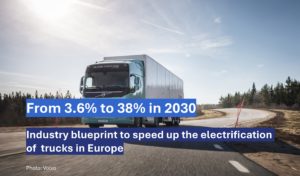Global trends in charging satisfaction
The report shows that while the adoption of EVs is increasing worldwide, satisfaction with public charging infrastructure is far from uniform. Based on a net satisfaction scale of -100 to +100, the global average sits at a positive score of +35. However, significant regional disparities are evident, especially when factors such as charging speed, network density, and reliability are considered.
In the U.S., for example, EV owners report higher satisfaction levels compared to other regions, largely due to Tesla’s well-established Supercharger network. In contrast, Northeast Asia—despite being home to major EV markets like South Korea and Japan—ranks much lower on the satisfaction scale, with users citing issues with charging speeds and the availability of charging stations. Europe, another key market, faces its own set of challenges, particularly related to rising electricity prices that are affecting user satisfaction.
U.S. satisfaction boosted by Tesla’s network
In the United States, the report highlights Tesla’s Supercharger network as a key factor behind the country’s relatively high public charging satisfaction score of +49. Tesla’s network, known for its fast charging speeds and wide availability, is a major advantage for the company’s customers. However, other EV owners who rely on third-party networks face more inconsistent experiences, dealing with slower charging speeds and fewer charging points.
This contrast within the U.S. market suggests that a more uniform public charging experience is needed to support broader EV adoption. While Tesla users are well-served, the report emphasises that improving the availability and reliability of charging stations for non-Tesla vehicles will be critical to maintaining overall satisfaction as the market grows.
Europe’s growing network struggles with costs
Europe, with its mature EV market, is making strides in increasing the availability of public charging stations. However, rising electricity costs have become a significant pain point for many EV users. According to the report, the high cost of charging is a major factor holding back satisfaction, particularly in countries like Germany, France, and Norway, where EV adoption is among the highest.
While Europe leads in the density of charging stations, especially in countries such as Norway and the Netherlands, the growing concern over charging costs could affect long-term satisfaction. The report suggests that addressing pricing issues will be crucial to ensuring that European EV owners remain satisfied with their charging experience, even as infrastructure continues to expand.
Northeast Asia: high EV adoption, low charging satisfaction
Despite strong EV adoption in countries like Japan and South Korea, public charging satisfaction in Northeast Asia remains one of the lowest, with a net score of just +7. The report attributes this low satisfaction primarily to slow charging speeds and limited availability of public chargers, particularly outside major cities.
Government incentives have played a key role in driving EV sales in the region, but the pace of infrastructure development has not kept up with demand. As a result, many EV owners face long wait times at charging stations and struggle to find fast chargers that meet their needs.
China: rapid expansion, room for improvement
China, the world’s largest EV market, presents a more positive picture, with public charging satisfaction at +36, just above the global average. The Chinese government has invested heavily in expanding charging infrastructure, and the results are beginning to show. However, with the rapid increase in EV ownership, congestion at charging stations, particularly in major cities, remains a concern.
While China continues to lead the world in EV adoption, the report points out that further improvements in the reliability and convenience of its charging network will be necessary to keep up with growing demand.
Payment preferences differ by region
One interesting finding from the report is the variation in payment methods preferred by EV owners across regions. In Europe and the U.S., credit cards are the dominant payment option at public charging stations, with over 50 % of respondents in both regions preferring this method. In contrast, app-based payments are more popular in China and Southeast Asia, reflecting the broader digital payment trends in those regions.
Addressing charging pain points to boost EV adoption
The report concludes that addressing the key challenges of charging infrastructure—such as speed, cost, and availability—will be essential to maintaining and improving customer satisfaction. For instance, in regions like Northeast Asia and Europe, where public charging satisfaction is lower, improving the affordability and speed of charging could significantly boost user experiences. In the U.S., the report notes that while Tesla users are generally satisfied, expanding reliable charging options for non-Tesla vehicles will be critical as the market continues to grow.
Conclusion: charging infrastructure must keep pace
Arthur D. Little’s report paints a clear picture: while global EV adoption is accelerating, public charging infrastructure must keep pace to ensure a smooth transition for consumers. Each region faces its own unique set of challenges, whether it’s addressing cost concerns in Europe, speeding up infrastructure development in Northeast Asia, or ensuring reliable network access in the U.S. and China.
As the world continues to move toward electric mobility, the report highlights the importance of creating a more reliable and accessible public charging experience for all EV owners, regardless of where they are located. With the right investments and focus on customer needs, public charging satisfaction could increase, helping to drive even greater EV adoption in the years ahead.
Source: Arthur D. Little

